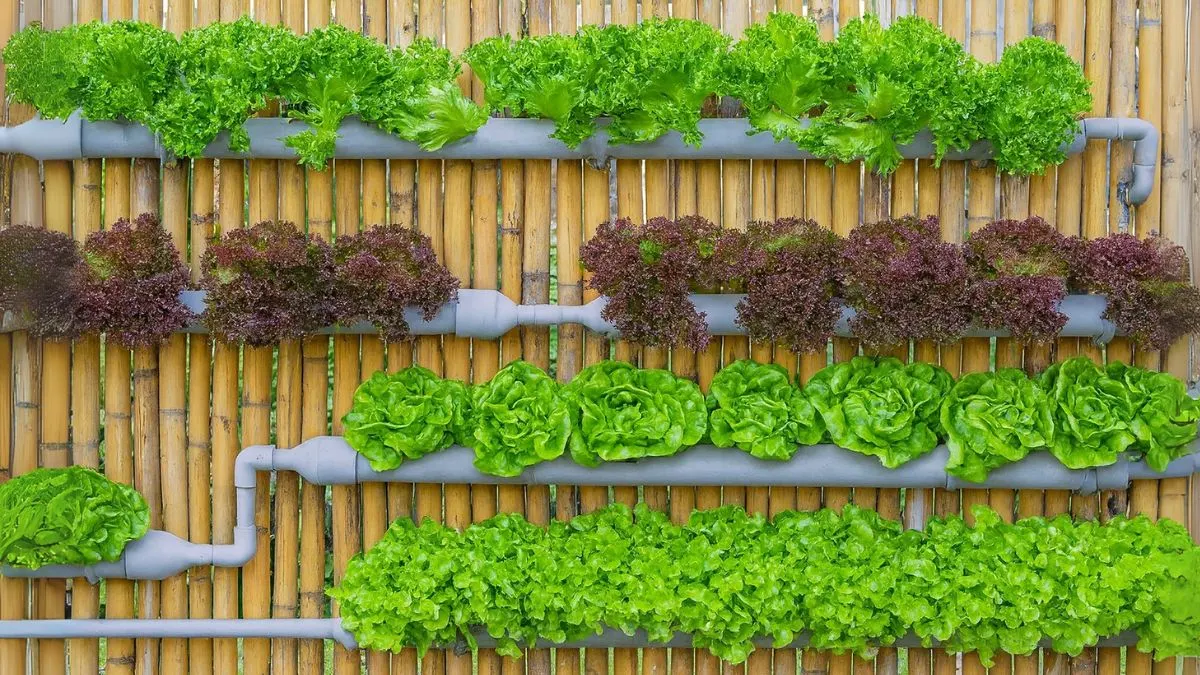Urban living often comes with one major challenge—space. Whether you live in a compact apartment in Toronto or a condo in New York, the dream of having a lush green garden can feel impossible. That’s where vertical gardening is a special kind of urban gardening suitable to small spaces.
Instead of spreading plants across the floor, vertical gardens grow upwards, maximizing every inch of wall or balcony. This method doesn’t just solve the space problem—it transforms homes into vibrant, living ecosystems.
I remember starting my own vertical herb garden in my small kitchen window. Within weeks, I had fresh basil, oregano, and mint growing beautifully while saving counter space. That’s when I realized vertical gardening is more than décor—it’s the future of small-space living.
What is Vertical Gardening?

Simply put, vertical gardening is the practice of growing plants upwards instead of outwards. This can be done using wall-mounted planters, hydroponic towers, or even DIY trellises.
Whether it’s flowers, herbs, or vegetables, vertical gardening makes it possible to bring greenery into places where horizontal space is limited.
Benefits of Vertical Gardens
-
Increased Space & Efficiency
The biggest benefit is increased space. A blank wall can become a thriving green canvas. By stacking plants vertically, you grow more in less area. For city dwellers, this means fresh food and greenery without needing a backyard.
-
Healthier Plants
Vertical systems encourage better air circulation around leaves. This leads to improved plant health by reducing fungal infections and pests.
Also Read: Struggling with Hanging Plants? This Is What You’re Doing Wrong
-
Aesthetic Appeal
Imagine walking into a room where a wall is covered in lush greenery. The aesthetic appeal is unmatched. It’s like living art that changes with the seasons.
-
Eco-Friendliness
Vertical gardens use less water (especially hydroponic systems) and promote eco-friendliness by reducing food miles when growing your own produce.
-
Mental Wellness
Studies show gardening reduces stress and improves mood. Having plants close by promotes mental wellness, especially in high-stress city environments.
How Vertical Gardening Enhances Homes
- Air Quality: Vertical gardening enhances air quality, provides insulation, and adds aesthetic value. Plants absorb toxins, filter pollutants, and release oxygen, making your home healthier.
- Insulation & Energy Saving: A green wall can act as natural insulation, keeping your home cooler in summer and warmer in winter. This means lower energy bills and a smaller carbon footprint.
- Décor with Purpose: Instead of expensive art, a vertical garden becomes your statement wall—both beautiful and functional.
Best Plants for Vertical Gardens
Not every plant is suitable for upward growth. Here are some of the best choices:
Plant |
Why It Works in Vertical Gardens |
Pothos (Money Plant) |
Hardy, low-maintenance, grows fast. |
Ferns |
Thrive in shaded, humid environments. |
Succulents |
Require little water, perfect for vertical frames. |
Herbs (Basil, Mint, Parsley) |
Compact, useful in daily cooking. |
Ornamental Grasses |
Add texture and depth. |
These plants are popular not just in Asia but also in Canada, USA, and across the world for small-space gardens.
Also Read: The Secret to Blooming Big, Bold Dahlias in Your Backyard
Different Types of Vertical Gardens
- Wall-Mounted Planters – Ideal for apartments; can be installed indoors or outdoors.
- Hydroponic Towers – Great for growing vegetables and herbs without soil.
- Hanging Baskets – Perfect for balconies with good sunlight.
- Modular Green Walls – Professional systems used in offices and condos.
- DIY Trellises – Cost-effective, fun projects for flowering vines.
Personal Experience: A Balcony Transformation
When I moved into a one-bedroom apartment in downtown Toronto, I barely had space for pots. I started experimenting with vertical frames for my herbs. Soon, I had tomatoes climbing upward and mint spilling over beautifully. Neighbors began asking how I managed to grow so much in such little space.
That’s when it hit me—vertical gardens aren’t just about beauty, they’re about redefining how we use space.
Challenges and Solutions
- Watering – Plants dry out faster vertically. Solution: Install a drip irrigation system.
- Light Needs – Ensure at least 6–8 hours of natural or artificial light.
- Weight Concerns – Choose lightweight soil or hydroponic setups for indoor walls.
- Maintenance – Regular pruning keeps the garden neat and thriving.
Why Vertical Gardens Are the Future
The world is urbanizing rapidly. By 2050, over 68% of the population will live in cities. With less outdoor land, vertical gardening is a special kind of urban gardening suitable to small spaces. It’s not just about space efficiency—it’s about sustainability, food security, and healthier lifestyles. From New York to Singapore, vertical farms are being built to feed growing populations.
For homeowners, the future is clear: vertical gardens will no longer be a luxury but a necessity for urban living.
Also Read: Your Step-by-Step Guide to Growing Crossandra
Conclusion
From offering increased space to promoting space efficiency, improved plant health, aesthetic appeal, eco-friendliness, and mental wellness, vertical gardens check every box for small-space living. Whether you’re in an apartment in Toronto, a condo in New York, or a townhouse in London, this is your chance to bring nature indoors.
The future of gardening is no longer horizontal—it’s vertical.
So the real question is: will your walls remain plain, or will you let them bloom into living gardens?






